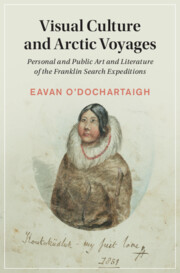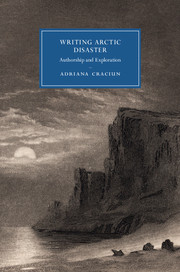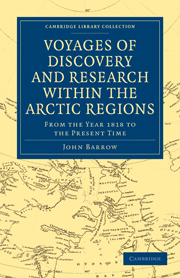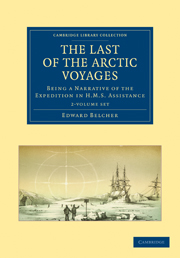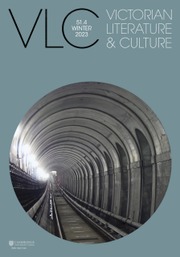Visual Culture and Arctic Voyages
In the mid-nineteenth century, thirty-six expeditions set out for the Northwest Passage in search of Sir John Franklin's missing expedition. The array of visual and textual material produced on these voyages was to have a profound impact on the idea of the Arctic in the Victorian imaginary. Eavan O'Dochartaigh closely examines neglected archival sources to show how pictures created in the Arctic fed into a metropolitan view transmitted through engravings, lithographs, and panoramas. Although the metropolitan Arctic revolved around a fulcrum of heroism, terror and the sublime, the visual culture of the ship reveals a more complicated narrative that included cross-dressing, theatricals, dressmaking, and dances with local communities. O'Dochartaigh's investigation into the nature of the on-board visual culture of the nineteenth-century Arctic presents a compelling challenge to the 'man-versus-nature' trope that still reverberates in polar imaginaries today. This title is also available as Open Access on Cambridge Core.
- Provides a new model for interdisciplinary use of documentary art and archives, examining little-known material and drawing attention to the importance of collections for research
- Offers thorough yet accessible readings of archival material, giving valuable insight not only for academic readers across multiple disciplines but also for interested non-academic readers
- Brings together visual, literary, and geographical ways of seeing the historical Arctic, providing a broader historical picture of Arctic exploration and suggesting new avenues for further research
- This book is also available as Open Access
Product details
September 2024Paperback
9781108994897
292 pages
229 × 152 × 16 mm
0.397kg
Available
Table of Contents
- 1. 'On the Spot:' Scientific and personal visual records (1848-1854)
- 2. 'Breathing Time:' On-Board production of illustrated periodicals (1850-1854)
- 3. 'These Dread Shores:' Visualizing the Arctic for readers (1850-1860)
- 4. 'Never to be Forgotten:' Presenting the Arctic panorama (1850)
- 5. 'Power and Truth:' The authority of lithography (1850-1855)
- 6. Conclusion: Resonances.

